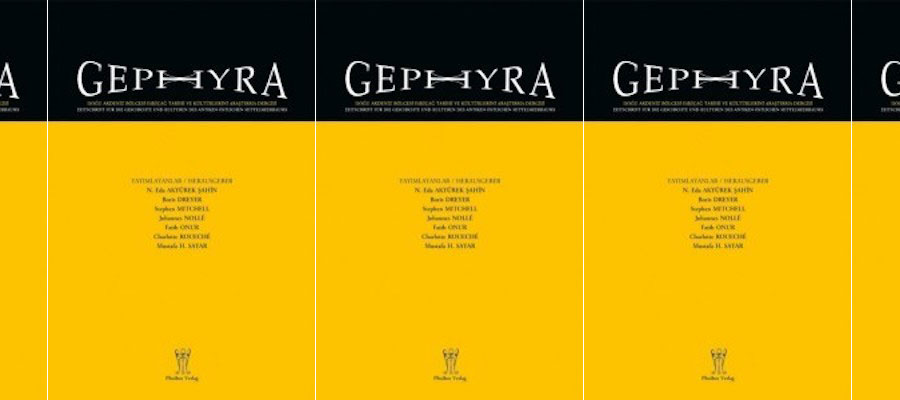Gephyra, volume 21 (May 15, 2021).
CONTENTS INCLUDE
Thebasa and the Byzantine-Arab Frontier of the Middle Taurus. Observations in confinio Lycaoniae atque Ciliciae
Robert ROKİCKİ
This paper proposes a new location of the Lycaonian city of Thebasa at Pınarkaya (Divaz) in the province (il) of Karaman and provides a critical analysis of its previous identifications. It revaluates the importance of Thebasa in a broader, geo-historical context pointing out its transformation from a commercial hub to a strategic military base. Through several unpublished sites, the paper presents a fresh look at the settlement and communication networks of the Middle Taurus Region. It also develops new interpretations of the dynamics of Byzantine-Arab relations at the turn of the eighth and ninth centuries.
Church Building and Wine Making East of Ankara. Regional Aspects of Central Anatolia in the Early Byzantine Period
Stephen MİTCHELL, Philipp NIEWÖHNER, Ali VARDAR, and Levent Egemen VARDAR
This paper reports early Byzantine carvings and inscriptions that were found in a survey of the eastern vicinity of Ankara/Ancyra in Galatia. Some fluted column capitals can be attributed to liturgical furnishings of early Christian churches. Some weights for wine presses are likewise decorated with Christian symbols and inscriptions. A cluster of finds from Kalecik/Malos echoes the fourth-century Life of St Theodotus of Ancyra. The symbol of a coiled snake refers to an ancient healing tradition that was originally associated with Asklepios, but appears to have continued in Christian times. Overall, the finds confirm the area’s ancient, and modern, reputation for wine making and show that healing cures were also provided. The formal repertoire and style of the carvings differ from other parts of the early Byzantine empire and lend additional distinction to central Anatolia as an early Christian Kunstlandschaft in its own right.
